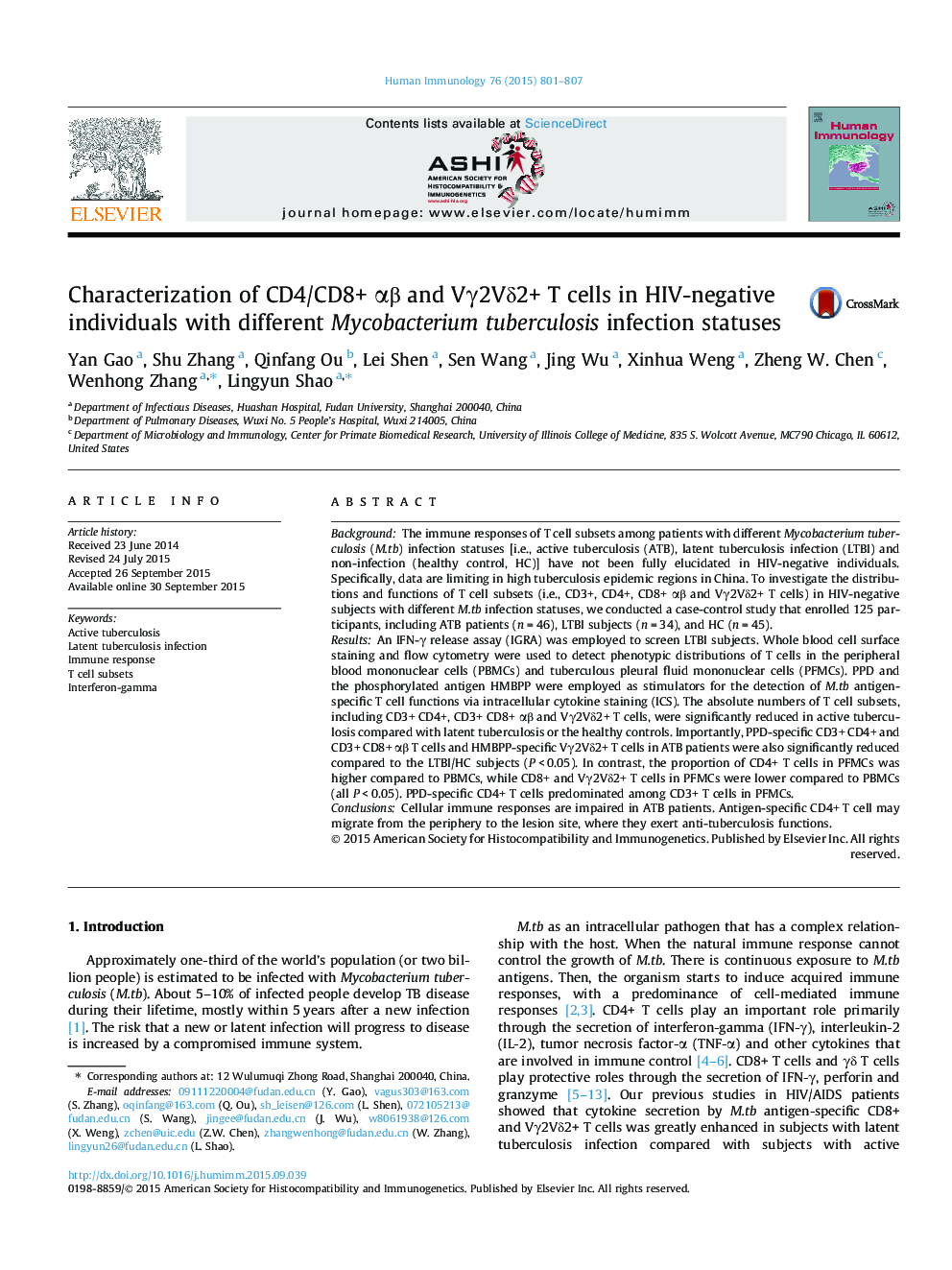| Article ID | Journal | Published Year | Pages | File Type |
|---|---|---|---|---|
| 3349795 | Human Immunology | 2015 | 7 Pages |
BackgroundThe immune responses of T cell subsets among patients with different Mycobacterium tuberculosis (M.tb) infection statuses [i.e., active tuberculosis (ATB), latent tuberculosis infection (LTBI) and non-infection (healthy control, HC)] have not been fully elucidated in HIV-negative individuals. Specifically, data are limiting in high tuberculosis epidemic regions in China. To investigate the distributions and functions of T cell subsets (i.e., CD3+, CD4+, CD8+ αβ and Vγ2Vδ2+ T cells) in HIV-negative subjects with different M.tb infection statuses, we conducted a case-control study that enrolled 125 participants, including ATB patients (n = 46), LTBI subjects (n = 34), and HC (n = 45).ResultsAn IFN-γ release assay (IGRA) was employed to screen LTBI subjects. Whole blood cell surface staining and flow cytometry were used to detect phenotypic distributions of T cells in the peripheral blood mononuclear cells (PBMCs) and tuberculous pleural fluid mononuclear cells (PFMCs). PPD and the phosphorylated antigen HMBPP were employed as stimulators for the detection of M.tb antigen-specific T cell functions via intracellular cytokine staining (ICS). The absolute numbers of T cell subsets, including CD3+ CD4+, CD3+ CD8+ αβ and Vγ2Vδ2+ T cells, were significantly reduced in active tuberculosis compared with latent tuberculosis or the healthy controls. Importantly, PPD-specific CD3+ CD4+ and CD3+ CD8+ αβ T cells and HMBPP-specific Vγ2Vδ2+ T cells in ATB patients were also significantly reduced compared to the LTBI/HC subjects (P < 0.05). In contrast, the proportion of CD4+ T cells in PFMCs was higher compared to PBMCs, while CD8+ and Vγ2Vδ2+ T cells in PFMCs were lower compared to PBMCs (all P < 0.05). PPD-specific CD4+ T cells predominated among CD3+ T cells in PFMCs.ConclusionsCellular immune responses are impaired in ATB patients. Antigen-specific CD4+ T cell may migrate from the periphery to the lesion site, where they exert anti-tuberculosis functions.
